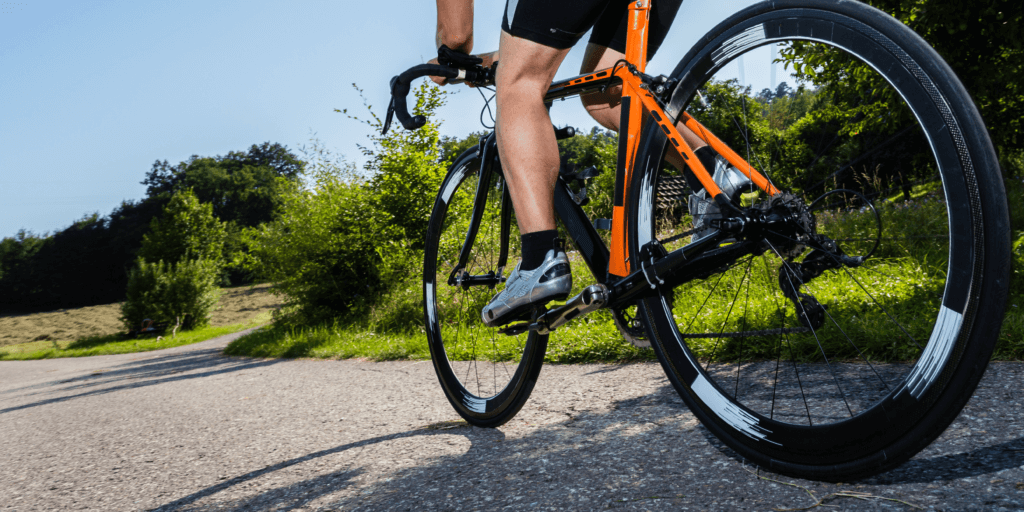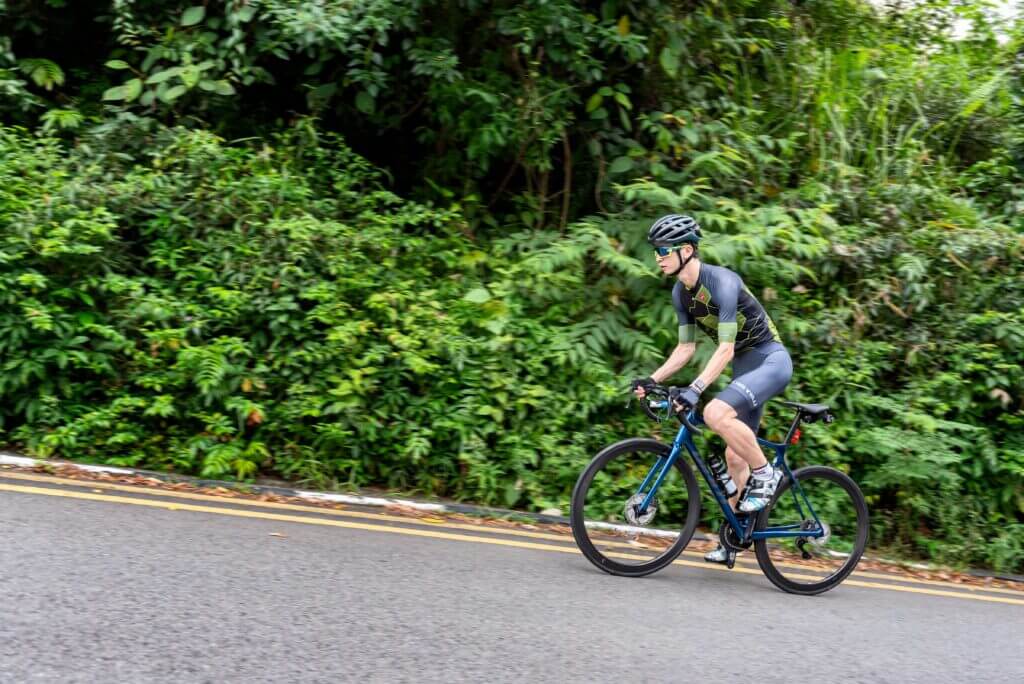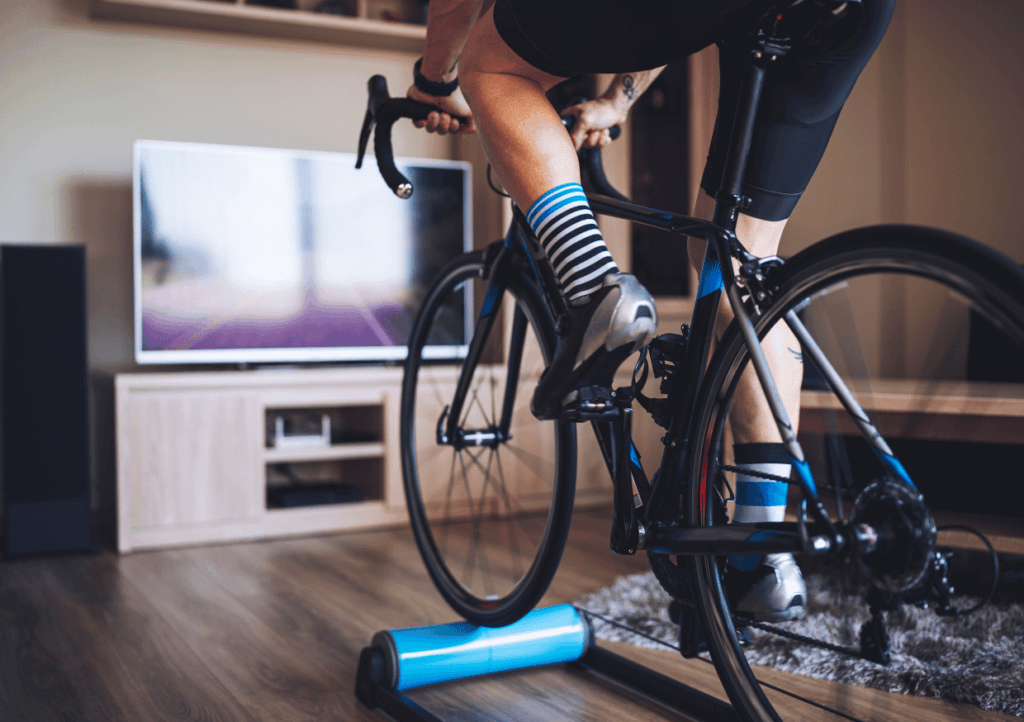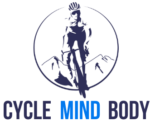As you start cycling, you’ll encounter a whole new vocabulary, and one term that might puzzle you is “cadence.” So, what exactly is cycling cadence and why does it matter for your riding?
Cadence, in its essence, is quite straightforward: it’s the number of times your pedals rotate per minute as you pedal. Cadence is measured in revolutions per minute (RPM). For instance, if your pedals make 75 rotations in one minute, your cadence would be 75 RPM.
However, if you’ve spent some time on the bike, you’ll notice that cyclists often pedal at different rates. Factors such as terrain, fitness level, and riding goals all influence what cadence works best for you.
Therefore, finding the best cadence for cycling is a personalized journey. However, regardless of your specific cadence preference, maintaining an optimal cadence is crucial for maximizing efficiency and minimizing fatigue during long rides.
There’s some debate about cadence, or the frequency at which you turn the pedals, and whether there’s an ideal number to aim for during your rides. To clear up the confusion, let’s delve into what exactly cadence entails and how it impacts your cycling experience.
The Science Behind Cycling Cadence

Understanding the physiological aspects of cadence is crucial for determining the best pedaling rhythm for your cycling. As you pedal, your muscles contract and relax in sync to generate power.
The cadence, or how fast you’re turning the pedals, plays a significant role in how your body responds to the demands of cycling.
Cycling at a lower cadence typically puts more strain on your muscles, while a higher cadence shifts the load more to your cardiovascular system. This means that if you have a more muscular build, you might feel more comfortable at a lower cadence, while a leaner rider may prefer pushing a lower gear at higher revs.
Experiments have shown that attempting to ride faster at a lower cadence, especially in a high or difficult gear, is more likely to lead to muscle strains and soreness after a ride compared to achieving the same speed at a faster cadence but with a lower load.
However, it’s essential to find the right balance. Too fast a cadence, and you may find your pelvis rocking, which can decrease pedaling efficiency and lead to quicker fatigue.
Measuring your cadence is relatively simple. You can start by counting how many times your legs go up and down in a minute. For a more accurate assessment, electronic devices like cadence sensors can be incredibly helpful.
These sensors attach to the left-side chainstay, and a magnet on your crank arm passes by the sensor, recording each rotation. The data is then sent to your bike computer, providing a detailed record of your cadence over time for analysis and tracking progress in your training.
Different cadences impose different physiological demands on the body. Lower cadences require more force per pedal stroke, engaging more fast-twitch muscle fibers and placing a greater burden on the muscular system.
In contrast, higher cadences involve less force per pedal stroke, distributing the workload more to the cardiovascular system and slow-twitch muscles.
By understanding the science behind cadence and how it affects your body, you can make informed decisions to optimize your pedaling rhythm and improve your cycling performance.
Finding Your Best Cadence for Cycling

Discovering your optimal cadence is a personalized journey influenced by various factors. As a cyclist, you’ll find yourself pedaling at different speeds depending on the terrain, your fitness level, and your riding goals.
However, it’s essential to note that what works for professional cyclists may not necessarily be suitable for amateur riders. Research conducted by British scientists in 2019 revealed that amateur riders might not benefit from excessively high cadences. In fact, pushing your legs to spin too quickly can lead to increased heart rate and reduced efficiency, ultimately wasting energy.
When observing professional cyclists, especially during races on flat courses, you’ll notice their cadence is typically very high, often surpassing 100 revolutions per minute (rpm). Even on climbs, elite riders like Chris Froome maintain a relatively high cadence, often around 100rpm. In contrast, recreational riders tend to pedal at a slower pace, averaging around 60rpm, while more experienced cyclists may aim for 80 to 90rpm.
While there’s a wide range of cadences among cyclists, generally, a good cadence falls between 80-100 rpm. Beginners often pedal slower, between 60-85 rpm, while seasoned cyclists and racers usually maintain a cadence of 75-95 rpm. Professionals can sustain even higher cadences, exceeding 100 rpm during intense efforts.
Experience also plays a significant role, with seasoned riders having honed their cadence preferences through miles of riding. However, the most effective cadence depends on the situation and event type.
Moderate cadences of 70-90 rpm are efficient for long endurance cycles, helping to conserve energy over long distances. Higher cadences of 90-100 rpm are preferred for racing and time trials, optimizing power production. Very high cadences of 100-120 rpm are reserved for short bursts of maximum power, such as sprints or attacks.
As a cyclist, you’ll inevitably encounter situations requiring cadence adjustments, such as steep climbs or sudden accelerations. Practice and experience are key to mastering these transitions smoothly.
By exposing yourself to a variety of cadences during training, you’ll be better prepared to tackle the demands of different terrains and race scenarios. Remember, finding the best cadence for cycling is an ongoing process, so embrace experimentation and listen to your body’s feedback to optimize your pedaling rhythm.
Tips for Improving Cycling Cadence

Whether you’re aiming to increase or decrease your cadence, there are strategies to help refine your pedaling rhythm.
Gradually Increase Cadence: One effective technique is gradually increasing your cadence while riding. Start by boosting your cadence by 3-5 revolutions per minute (rpm) and maintain it for five minutes. Monitor your heart rate during this time – if it increases significantly, dial back your cadence slightly. After completing the drill, return to your normal pedaling cadence for a few minutes before repeating the process.
Focus on Smooth Pedal Strokes: Another key aspect to focus on is achieving smooth pedal strokes. Concentrate on maintaining a fluid and circular motion throughout each pedal revolution. Avoid applying excessive force or stomping down on the pedals, as this can lead to energy wastage and reduced efficiency. Instead, aim to exert consistent pressure across the entire pedal stroke to optimize power transfer.
Incorporate Cadence Drills: Incorporating cadence-specific drills into your training routine can also help enhance your pedaling efficiency. For example, try single-leg drills or high-cadence intervals to improve your pedal stroke and expand your cadence range. During single-leg drills, dedicate 90 seconds to focusing solely on one leg. Pay close attention to pulling your foot across the bottom, lifting your knee upward, and kicking softly over the top of the pedal stroke. After one minute, switch your focus to the other leg and repeat the drill.
Listen to Your Body: Listening to your body is crucial when it comes to optimizing your cadence. Pay attention to how your body responds to different cadences and adjust accordingly. If you experience discomfort or strain at a particular cadence, try modifying your pedaling rhythm to find a more comfortable and sustainable pace. Remember that your optimal cadence may vary depending on factors such as terrain, fitness level, and riding goals.
Use Technology: Utilizing technology, such as cycling computers or cadence sensors, can provide valuable real-time feedback on your cadence. Monitoring your cadence during rides allows you to maintain a consistent pedaling rhythm and track your progress over time. By incorporating these tips into your training regimen, you can refine your pedaling technique, improve your cadence adaptability, and enhance your overall cycling performance.

